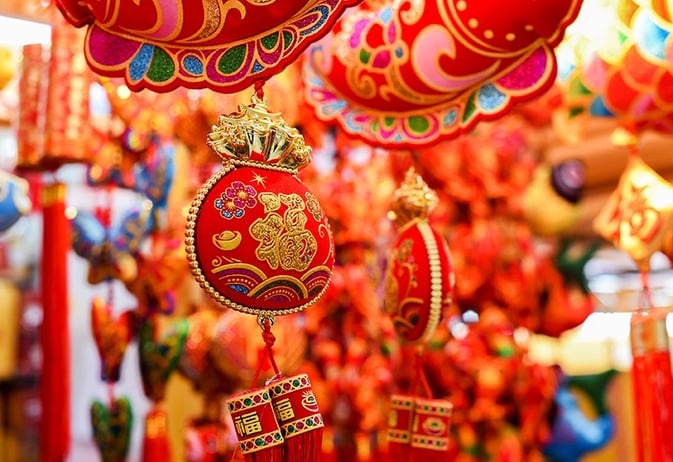On January 22nd, 2023, millions of people around the world will be gathering to ring in the Lunar New Year – this year honoring the Rabbit. It is known as the world’s biggest human migration every year: in 2018, 385 million Chinese people left major cities to visit their families in rural parts of China and 6.5 million people traveled abroad. Nowadays, the holiday is not only celebrated in countries across Asia - such as Korea, Vietnam, Laos, or Singapore – but also all around the world. Let’s take a moment to reflect on some of the culinary preferences of Asian guests and what restaurants can do to meet their expectations (and please their taste buds)!
Dish sharing and plethora of culinary experiences
Chinese New Year is a great celebration: families take advantage of the week-long holiday, also known as the Spring Festival, to enjoy rituals, family reunions and feasting. Food, drinks and culinary experiences are of course a big part of these celebrations. If flavor profiles can range from sweet and sour to curries, soy sauce or miso combined with sautéed, fried, steamed or roasted proteins, at the root of what Asian guests are seeking is a sharing experience: guests will of course appreciate a meal with opportunities to try different flavors and cooking techniques, but opportunities to share food with their friends and families, talk about it, reflect on their meal is part of the fun and feasting happening during Lunar New Year.
Catering to Asian guests preferences
Think about combo-dishes
How can a non-Asian restaurant adequately serve Asian guests during Chinese New Year? What about combo-dishes? Think surf-and-turf, or appetizer combos, with various sauces to embark guests taste buds to various experiences - all served in small portions but with enough items on the plate to be savored by every single person in the group of guests.
As Asian transplants living in Switzerland ourselves, we were first astonished when trying the Chinese Fondue - thinly sliced meat cooked in boiling broth, and dipped or flavored with mayo, Thousand Island dressing, Bourguignonne sauce etc. Nevertheless, this is exactly the type of culinary experience that appeals to the cultural background of Asian guests while still embarking them into a brand new flavor story.
Don’t forget veggies
Vegetables are crucial in Asian diets. In Asia, vegetables are not a complement (or supplement), but often take a leading role in a dish. For example, a stir-fried beef dish flavored with green onion is different from a stir-fried beef dish flavored with green pepper or with kimchi. Vietnamese and Thai dishes use more raw ingredients (beans sprouts or basil), Japanese and Korean pickle vegetables (Kimchi), while Chinese prefer crispy sautéed vegetables.
Asians eat vegetables not because they have to but because they enjoy vegetables. When looking at a Chinese dining table, not only are most dishes combinations of meats and vegetables, but there will be at least one individual vegetable dish to share. Furthermore, even though there are many vegetarians in Asia, Asians’ love for vegetables is different from vegetarians’. In non-Asian restaurants, maybe in addition to salads and sautéed vegetables, there are opportunities to offer more vegetables with varieties in cooking methods and flavors.
Instagram-worthy menus
We all know that a picture is worth a thousand words: this is taken quite literally in the restaurant world across Asia as menu items are often shown in image, primarily to make guests’ choice easier (images are also often combined with a hierarchy of dishes within the menu, featuring top sellers first).
Non-Asian restaurants catering to Asian guests could definitely take a lead from their counterparts in Asia by making their menus Instagram worthy: individual plates usually served in non-Asian restaurants do offer quite a bit of opportunity for great imagery. Plus, not to be forgotten, great opportunities for sharing on social media; any savvy millennial will jump on the opportunity to take a good shot on their personal feed after all and for Asian tourists, the opportunity to eat at your restaurant could be a “once in a lifetime” experience. For this reason, they may order more dishes than they can eat, order the best wine available, and document every single details. These behaviors are not related to showing off their wealth, but more about sharing their experience. These guests may never return to your restaurant, yet their social media sharing definitely will bring their peers to your place.





